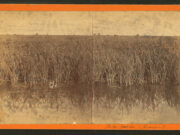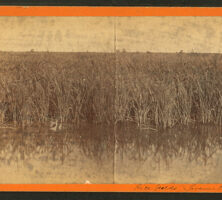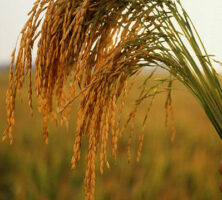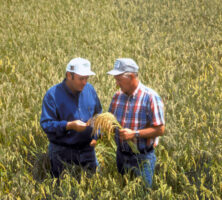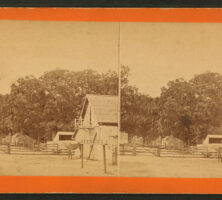Rice, Georgia’s first staple crop, was the most important commercial agricultural commodity in the Lowcountry from the middle of the eighteenth century until the early twentieth century. Rice arrived in America with European and African migrants as part of the so-called Columbian Exchange of plants, animals, and germs. Over time, profits from the production and sale of the cereal formed the basis of many great fortunes in coastal Georgia.
The heart of the United States rice industry lay in the South Atlantic region from the early eighteenth century until the late nineteenth century. After South Carolina, Georgia was the leading producer in this region. Beginning in the 1880s, the center of the U.S. rice industry shifted to the “Old Southwest”—Louisiana, Arkansas, and Texas—and later to California as well. Commercial rice production in Georgia and other parts of the South Atlantic region collapsed completely in the first decade of the twentieth century. Nonetheless, its legacy on the landscape and people of coastal portions of South Carolina and Georgia, and to a lesser extent southeastern North Carolina and northeastern Florida, has been profound.
Origins of the Georgia Rice Industry
Even though rice had already risen to prominence in neighboring South Carolina by the time the colony of Georgia was established in 1733, the cereal was not commercially important in Georgia until the 1750s. Indeed, in their original design the founding Trustees of Georgia hoped to create a colony quite unlike South Carolina, with free white European laborers (drawn from the lower classes) constituting the basic workforce in the colony.
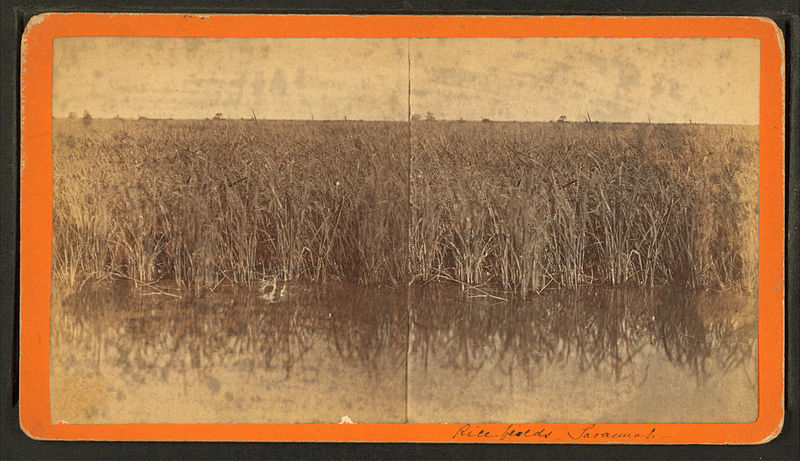
Photograph from O. Pierre Havens, Wikimedia
The Trustees’ original plan—which included a prohibition against slavery—soon fell by the wayside. Many Georgians were aware of the profit possibilities associated with the commercial production of rice on slave plantations in South Carolina, and they realized that under a similar institutional framework coastal Georgia had the potential to offer similar opportunities. At the same time—perhaps even earlier—many ambitious South Carolina rice planters came to the same realization and mounted an aggressive campaign to make Georgia safe for rice and slavery, if not for democracy. By mid-century proslavery Georgians and South Carolinians carried the day. In 1750 the ban on slavery in Georgia was repealed, and with the royal takeover of the colony in 1752, conditions finally became favorable for the establishment in Georgia of a plantation colony based on rice and slave labor.
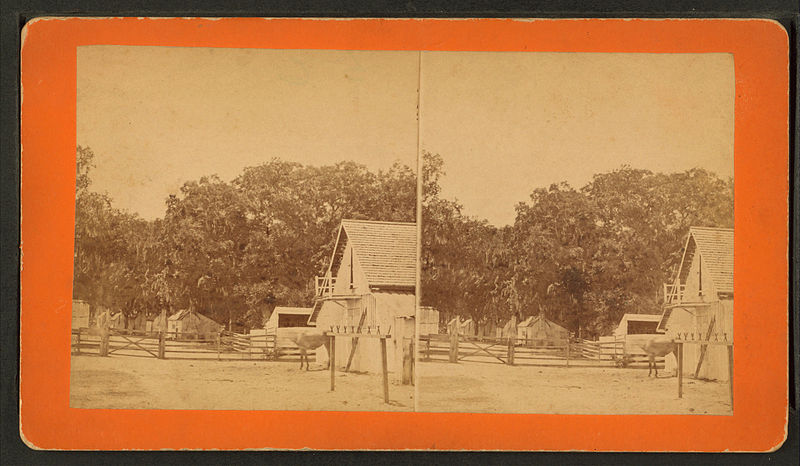
Photograph by D. J. Ryan, Wikimedia
From the start Georgia’s rice industry could best be described as a “knock-off” of South Carolina’s. Rice cultivation began in South Carolina in the late seventeenth century but did not become deeply entrenched until the second or third decade of the eighteenth century. Recent scholars have demonstrated that Africans and African Americans contributed much more than brute labor to the development of the rice industry that developed along coastal South Carolina and, later, coastal Georgia. More specifically, most scholars now believe that much of the technology involved in rice cultivation in this area originated in rice-producing regions in West Africa and was transferred across the Atlantic by enslaved Africans.
During the first decades of serious rice production in Georgia, rice was grown both in inland freshwater swamps in the coastal counties and along the colony’s principal tidal rivers. By the mid-1760s migrant South Carolinians and Georgians alike were operating sizable (and profitable) rice plantations not only along the Savannah River but also along the Ogeechee, the Altamaha, and the Satilla. These four rivers, along with the St. Marys, where rice cultivation developed a bit later, were to constitute the principal “rice rivers” over the course of the entire history of rice cultivation in Georgia. Some rice was also grown in other parts of Georgia in later periods, particularly in the decades after the Civil War (1861-65), though the “tidal zones” of these five rivers became synonymous with the cultivation of rice.
Rice Cultivation
Few crops are more demanding to cultivate than rice, particularly “wet” rice. Arduous cultivation requirements, along with high mortality rates in the mosquito-infested swamps of the Lowcountry, made it difficult to attract white labor into the rice industry. That, in addition to Africans’ and African Americans’ knowledge about rice cultivation, led profit-hungry white planters in Georgia and other parts of the Southeast to depend almost entirely upon Black labor, whether enslaved or free, throughout the entire history of the industry.
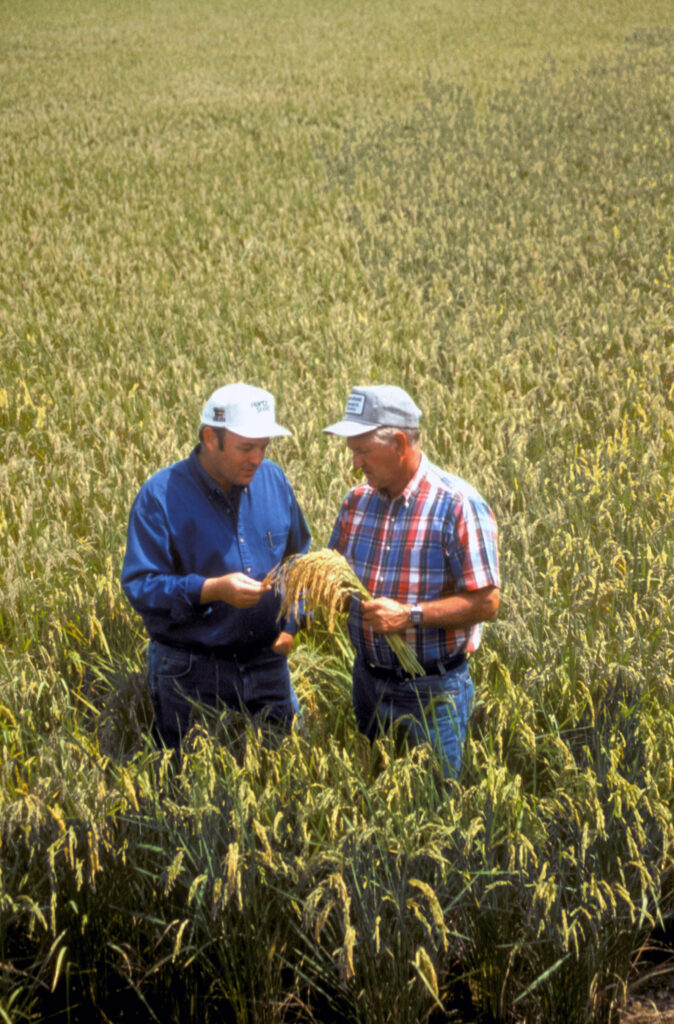
Photograph by U.S. Department of Agriculture
It is difficult today to appreciate fully the amount of work involved in establishing and maintaining the rice economy of coastal Georgia. Swamps had to be drained, cleared, and leveled to make them suitable for agriculture of any type. For tidal cultivation, an elaborate system of irrigation works—levees, ditches, culverts, floodgates, and drains—had to be constructed (and maintained) to control and regulate the flow of water onto and off of the fields.
Once the fields and irrigation works were rendered suitable for cultivation, the production sequence could begin. After the rice was sown, the fields were flooded periodically during the growing season. Whenever the water was drawn off the fields, a good deal of hoeing had to be done; once the rice was mature, the crop had to be harvested, processed, prepared for market, and transported. Tremendous expenditures of labor and outlays of resources and energy were needed to complete this yearly sequence.
Evolution of the Industry
Despite its huge importance to Georgia’s economy, the rice industry was subject to relatively rigid geographical/environmental constraints, and it never utilized more than a small proportion of the available land in the Lowcountry, much less in Georgia as a whole. Even at its peak no more than 45,000 acres of land were devoted directly to rice production in Georgia, and in all likelihood the actual figure was closer to 35,000 or 40,000 acres.
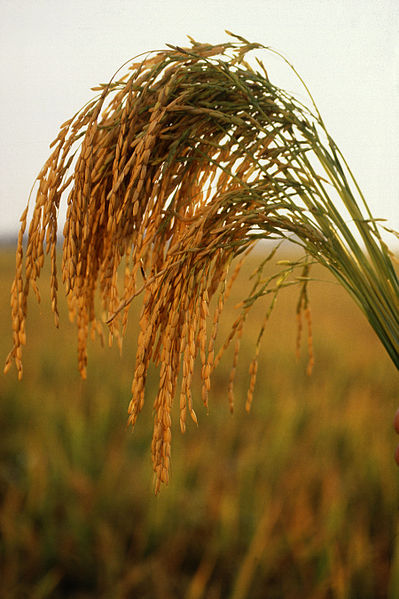
Photograph from Keith Weller
From its modest beginnings in the 1750s, Georgia’s commercial rice industry grew substantially in the eighteenth century and continued to expand in the nineteenth century, before peaking on the eve of the Civil War. In the last three census years of the antebellum period, the figures for rice output in Georgia were roughly 12.2 million pounds of clean rice in 1839, 24.7 million pounds in 1849, and 51.7 million pounds in 1859. At least 95 percent of total rice output in Georgia originated from coastal counties in each of these years.
African American workers were central to the Georgia rice industry throughout its history. Although white planters, stewards, and overseers performed important entrepreneurial and managerial functions on Lowcountry rice plantations, and although a surprising number of white small planters and white yeomen grew some rice both within and without the Lowcountry (particularly in the late nineteenth century), there was always a very close connection—indeed, a near identity—between Black labor and white rice in Georgia.
Demise of the Georgia Rice Industry
That connection made the problems arising from rice’s decline and ultimate disappearance as a commercial crop in Georgia profoundly painful and dislocating to Lowcountry Blacks, both economically and socially. Indeed, the demise of rice devastated economic and social life for Blacks and whites alike in the Lowcountry. The reasons for the abandonment of rice cultivation are as complex as they are controversial. Scholars have generally attributed it to the destruction directly associated with the Civil War, to the reluctance of post-emancipation African Americans to labor in rice swamps without the degree of coercion possible under slavery, and to the effects of a series of severe weather “shocks”—hurricanes primarily—that struck the Lowcountry in the late nineteenth century.
Some recent historians have adopted another view: the demise of rice in this area was due not so much to the factors mentioned above but to long-term expansion and elaboration of global capitalism, shifts that hurt the competitive position of the South Atlantic rice industry. As an integrated world rice market came into existence, low-cost rice from South and Southeast Asia increasingly undercut the position of American rice in its most important markets, particularly in northern Europe.
To be sure, the Civil War, post-emancipation difficulties in labor relations, and hurricanes certainly did not help the competitive position of the Georgia rice industry, but the handwriting was on the wall for the South Atlantic producers well before the opening shots of the Civil War were fired at Fort Sumter, South Carolina. Competition from India, Java, Burma, Siam, and Cochinchina (later Vietnam)—rather than the Union forces—destroyed the Georgia rice industry. Indeed, the migration of the U.S. rice industry to the Old Southwest in the late nineteenth century can also be seen as a response in large part to international competitive pressures. Unlike production in the South Atlantic region (or in Asia), rice in Louisiana, Arkansas, and Texas was capital-intensive rather than labor-intensive: farmers in the region knew that their only chance to compete with low-cost Asian competition would be by increasing productivity through the substitution of capital (particularly mechanized equipment and sophisticated irrigation works) for labor. They did so with a vengeance, as did California rice growers shortly thereafter. Growers in Georgia and other parts of the Southeast could not make a similar shift: the swampland of the region would not support the weight of the new mechanized equipment, and the necessary investment capital was lacking in any case.
The collapse of Georgia’s rice industry in the late nineteenth century is vividly illustrated in production data culled from the federal censuses. After peaking at more than 51 million pounds in 1859, clean rice production in Georgia fell to about 21.6 million pounds in 1879 and to just over 8.9 million pounds by 1899. By 1919 production in the state totaled less than 60,000 bushels—less than 2 million pounds—and accounted for only .2 percent of U.S. production as a whole. By that time more than 99 percent of U.S. production came from Louisiana, Texas, Arkansas, and California.
The effects of the decline and ultimate demise of the rice industry in coastal Georgia were felt for a long time. By the late nineteenth century the area’s other major staples had collapsed as well, and for much of the twentieth century inhabitants of the rural Lowcountry were forced into such alternative activities as truck farming, tourism, and forest industries, none of which offered growth possibilities similar to rice in its prime.


